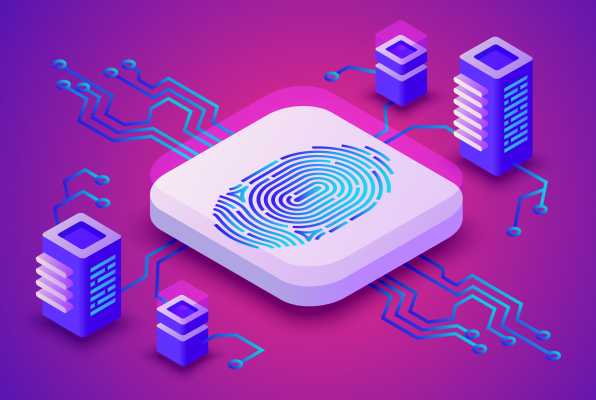Biometrics, a unique, hard-to-forge method of identification and verification, is now being integrated into blockchain technology. This new technology offers a secure way to verify identity and prevent fraud.
Biometrics uses a person’s unique physical or behavioral traits to identify them. Examples include fingerprint scans, facial recognition, and voice authentication.

Identity verification
Identity verification is a vital step for companies and individuals seeking secure access to sensitive information. Traditional methods of verifying identity are cumbersome and insecure, but blockchain technology is set to change all that. In a blockchain-based identity system, biometrics will be used to verify a person’s identity by scanning unique physical or behavioral characteristics. This method of authentication is more secure than passwords and pin codes because it cannot be forgotten or stolen. Biometrics can include fingerprints, face scans, iris patterns, and voice recognition.
Blockchain-based identity systems will also allow for self-sovereign identity, in which people have complete control over their identity data. This will make it possible for people in marginalized communities to establish verifiable digital identities and receive benefits like financial inclusion, social empowerment, and access to public services.
In addition, blockchain-based identity systems can speed up and streamline Know Your Customer (KYC) and Anti-Money Laundering processes by securely sharing verified identity information between entities. This will improve transparency and reduce the risk of unauthorized access to sensitive information.
Another advantage of blockchain-based identity systems is that they will provide greater accuracy than traditional methods, thanks to the use of AI technologies. AI enhanced voice biometrics, for example, can be combined with blockchain to deliver a powerful, robust, and secure authentication solution. This approach offers high-level security by dividing the biometric vector into two shares, one of which is stored on the mobile device and the other on the server.
Access control
Biometrics are a powerful form of authentication technology. They use unique physical characteristics, such as fingerprints, iris scans, voice patterns, or facial recognition, to verify identity and ensure that only authorized individuals gain access to sensitive data. This security measure is becoming increasingly important in the digital world, where hackers are constantly improving their ability to hack into secure systems.
A combination of biometrics, geolocation, and blockchain can provide a robust solution to the problem of verification. This technology will ensure enhanced security, reduced fraud, and a seamless user experience. Moreover, it will make the blockchain an ideal platform for storing sensitive personal information.
The combination of these technologies will enable users to authenticate their identity with a single click and without any additional information. This will allow them to avoid the hassle of memorizing passwords and carrying around access cards. It will also make it more difficult for hackers to compromise personal information.
However, it is important to note that storing biometric data on the blockchain is not recommended. Instead, it is advisable to store it in off-chain storage, such as a private blockchain. Additionally, the use of Shamir’s Secret Sharing can help further protect this information. These techniques split a piece of sensitive information into shares, which are not revealed unless all the shares are combined.
Authentication
When paired with geolocation and blockchain technology, biometrics can be used for secure identification. This enables users to verify their identities with unique physical characteristics, making them virtually impossible to imitate. It also helps to prevent identity theft and fraud, while offering a seamless user experience.
Biometrics can be used in a variety of ways, from unlocking smartphones and accessing digital payments to granting security clearance at airports and border crossings. Many mobile devices now offer fingerprint scanning and facial recognition capabilities, allowing users to authenticate themselves without the need for passwords or PINs that can be easily forgotten or stolen. Biometrics can be used in combination with other authentication methods to provide increased security, such as veins scanning and voice recognition.
Authentication is critical for any digital business, especially in the case of remote transactions or online onboarding. While traditional verification methods such as asking for ID documents or conducting in-person checks can be time-consuming and costly, biometrics can streamline the process while ensuring accurate identification.
Biometrics can be paired with blockchain technology to create tamper-proof systems that can store user identity information in a decentralized database. This makes it difficult for hackers to break into the system and steal data, resulting in less risk of financial loss. One example of this is the Civic network, which pre-registers users and their identification data, encrypts it and stores it on the blockchain.
Decentralization
As cyber attacks become increasingly sophisticated, security protocols need to be upgraded. The convergence of biometrics, geolocation, and blockchain technology can provide an ideal solution for security systems that are robust and reliable. This will help protect against identity theft and other cybersecurity threats.
In addition, biometrics can be used to authenticate a person’s identity by determining their physical or behavioral characteristics. These characteristics are inherently personal and cannot be replicated, making them a powerful form of authentication. Biometrics can also be used for access control, ensuring that only authorized users can enter a physical space or access sensitive information.
One of the most important features of blockchain is decentralization. This feature makes it difficult for hackers to alter data and enables users to control their own private keys. Decentralization is especially helpful for biometric security applications because it ensures that no one can tamper with the data.
Another aspect of blockchain that makes it suitable for biometrics is its encryption capability. The blockchain network is composed of distributed ‘nodes’ that verify the authenticity of new blocks before adding them to the chain. This system makes it impossible for hackers to tamper with the data and prevents the spread of fake transactions. Moreover, the blockchain is highly secure because it uses a cryptographic proof of work that requires huge amounts of computing power to break.